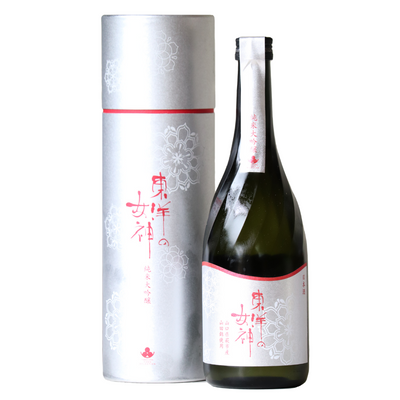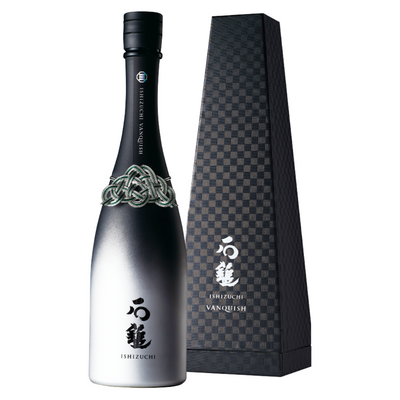Part 3: How is Sake produced?
The sake brewing process can be divided into two stages: ingredient preparation and brewing itself.
Ingredient preparation
- Polishing: rice is polished to remove the outer layers of the rice grain, which is done to remove protein, fats, and other minerals that are unwanted when brewing sake
- Washing: to remove the residues from polishing
- Soaking/steaming: rice is soaked and then steamed in preparation for koji making
- Koji-making: koji mold spores are sprinkled on the steamed rice and cultivated over a period of several days
Brewing
- Starter-making: steamed rice, koji rice, and water are mixed in a small tank, and yeast is added to form a fermentation starter (anyone making sourdough bread should be familiar with this)
- Mashing (main fermentation): the starter is transferred to a larger tank, to which more steamed rice, koji, and water are added in multiple stages over four days. The main fermentation then works in parallel to the starch to sugar conversion and takes about 20 to 30 days.
- Pressing: the fermentation mash is pressed through filters to separate the sake liquid from the rice sediments.
- Finishing: optionally water dilution, pasteurization, and carbon filtration are conducted
- Storage: sake is either stored in tanks or directly in bottles
The Sake Brewing Process in Detail
Polishing (Seimai) - The key difference between sakes
Because sake that is made with whole-grain rice tastes rough, most sake is made with polished rice. The aim of polishing is to remove the fats, minerals, and proteins from the starch so that only the latter can be used to make sake. This is the essence of Ginjo and Daiginjo sake (a low polishing ratio, meaning little of the rice, or only the starchy middle, remains) and is how sake is classified (by the polishing rate). This is also the reason that sake rice is designed to have a well-defined starchy middle so that polishing removes little starch but more of the unwanted elements.
Sake with lower polishing ratios (i.e. little of the rice remains) tends to be light and clear with fruity and flowery aromas, while sake with a higher polishing ratio (i.e. most of the rice remains) has more lactic and cereal aromas as well as higher acidity. It’s important to know, however, that sake with a low polishing ratio is in no way objectively better than sake with a high polishing ratio, even though it’s more expensive. Ginjo and Daiginjo (sakes with low polishing ratios) are popular and easy to drink, but sakes with a high polishing ratio are often more interesting.
Washing (Senmai) and Soaking (Shinseki)
After polishing, rice powder residues are washed off of the rice grains. Without washing, the sake would become rough-textured and overly acidic. Depending on the brewery size and type of sake, the sake is washed in small containers, large vats, or continuous washing machines (no, not the same as for clothes).
Until the actual washing process begins, the rice is stored in a dark, cool place for a certain period of time in order for the rice to cool down from polishing and to re-absorb the ambient humidity (which was lost during polishing).
Soaking (Shinseki) and Steaming (Mushi)
In this step, the rice is soaked until it has absorbed enough water for it to be steamed. For premium sake, this process has to be conducted precisely down to the second. For other styles, less precision is needed and the rice is simply soaked in tanks for a couple of hours.
Traditionally, the soaked rice is steamed in batches using a larger steamer called Koshiki. Batches of up to one tonne can be steamed in about an hour.
The soaking and steaming help to raise the moisture level within the grain, while keeping the outside of the rice firm. Besides that, steaming also disinfects the rice and facilitates the change of the starch structures so that the koji enzymes can later break them apart into sugar more easily.
Koji-Making (Seigiku)
15-25% of the steamed rice is then used for koji-making, which usually takes about two days. Before bringing the rice into the Koji-Muro, a special climatized room for koji-making, the rice is cooled down. During the inoculation, the Koji mold (fungus spores) are sprinkled onto the steamed rice, which is spread out on a table.
Warm and humid conditions encourage the koji mold to grow throughout the grains. The rice is thoroughly mixed several times in order to make sure that the mold grows evenly. Later, the rice is transferred to small boxes where mold growth can be controlled more precisely. When the optimal mold growth is reached, the growth is stopped by moving the rice into the coolest and driest part of the koji room.
Making the Fermentation Starter (Shubo-Zukuri)
In order for the fermentation to begin, steamed rice, koji rice, yeast, and water have to be mixed together. When the ingredients are mixed together, the koji enzymes start to convert the rice starch into sugar.
Because it takes time to build up a healthy yeast population, and because during that stage other unwanted microbes can easily settle in the liquid and ruin the sake, the brewer first makes a small batch, the so-called fermentation starter. To help avoid contamination, lactic acid is usually added as well. It takes about two weeks until a healthy yeast population is reached.
Mashing (Moromi-Zukuri, Shikomi)
The next step is the main fermentation or mashing. If the ingredients are added together in one go, the fermentation could again be outrun by other microbes, spoiling the sake. So the brewer adds the ingredients in stages, assuring a high yeast population resides in the mash at every stage, which in turn prevents other organisms from growing.
The fermentation takes place over a period of four days and is divided into three stages (Sandan-Jikomi):
- Day 1: ⅙ of the total steamed rice, koji, and water are mixed together with the fermentation starter
- Day 2: Nothing is added to give the yeast population time to grow
- Day 3: ⅓ of the total ingredients are added
- Day 4: Remaining ½ of the ingredients are added
Once the main fermentation has been established, two processes happen simultaneously to turn the raw ingredients into sake, which is why the process is called multiple parallel fermentation. At the same time as the koji enzymes convert starch into fermentable sugar, the yeast is busy consuming the sugar to create alcohol, carbon dioxide, and heat. Achieving the right balance in the two simultaneous processes is what makes sake brewing especially difficult, especially for Ginjo-type sakes.
Depending on the temperature, the main fermentation takes about 3 to 5 weeks. If the desired level of alcohol and sweetness is reached, the fermentation is stopped by cooling the liquid down so that the yeast enzymes become inactive. Sake at this stage typically has 17% to 20% alcohol by volume.
Pressing (Shibori)
Right after the fermentation is stopped many rice solids remain, and the sake resembles more of an alcoholic porridge than what one usually thinks of sake. To remove those excess sediments (lees, Sake Kasu) the sake is pressed through a mesh. This process is called pressing.
To press sake, breweries usually use large accordion-like presses but sometimes opt for more traditional techniques like hanging bags full of mash and letting gravity filter the sake out or vat filtering. The resulting liquid is clear with a pale lemon-greenish color. If you ever find you have a chance to taste this “freshly pressed sake” then by all means do so, it is the freshest and best version of sake possible!
At this point, it is relatively common for brewers to add a small amount of distilled alcohol (Jozo alcohol) just before pressing. This is not done to “cheapen” the sake but helps dissolve flavors from the remaining rice into the sake. If this is not done then the sake is labeled “Junmai” sake, or pure rice sake.
Finishing
Before the sake is stored (either in tanks or bottles), the freshly pressed sake goes through a row of optional finishing processes. Carbon filtration is used to remove color and refine the taste, single or double pasteurization is done to deactivate the live enzymes and preserve the sake and water can be added to lower the alcohol content a bit.
Storage (Chozo)
Sake is stored for a few months at the brewery before being released. This resting time allows the sake to be more balanced as the flavors meld together. And some sake is matured for a couple of years at the brewery (aged sake, Koshu) before being put on the market.




